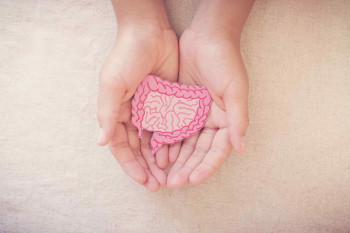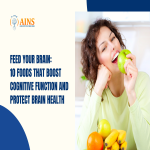Warning Signs Days Before a Stroke: A Comprehensive Guide
Stroke is a medical emergency that occurs when blood supply to the brain is disrupted, leading to the rapid loss of brain function. It is a life-threatening condition that requires immediate medical attention.
In this blog, we will delve into the warning signs days before a stroke, their importance in recognizing pre-stroke symptoms, and the significance of early detection and treatment. We will also explore lifestyle changes for stroke prevention, the recovery and rehabilitation process, and address frequently asked questions.
Understanding Strokes
A stroke can be defined as a sudden interruption of blood flow to the brain, causing brain cells to be deprived of oxygen and nutrients.
This interruption can be due to a blockage in the blood vessels supplying the brain (ischemic stroke) or a ruptured blood vessel in the brain (hemorrhagic stroke). Strokes can lead to various disabilities and may even be fatal if not treated promptly.
Types of Strokes
Ischemic Stroke: This is the most common type of stroke, accounting for approximately 85% of all cases. It occurs when a blood clot or plaque buildup narrows or blocks an artery leading to the brain.
Hemorrhagic Stroke: This type of stroke occurs when a weakened blood vessel in the brain ruptures, causing bleeding into or around the brain.
Risk Factors for Strokes
Certain factors increase the risk of experiencing a stroke.
These include:
- High blood pressure (hypertension)
- Diabetes
- Smoking
- Obesity
- High cholesterol levels
- Family history of stroke
- Age (risk increases with age)
- Previous history of stroke or transient ischemic attack (TIA)
- Common Symptoms of Strokes
Strokes can manifest through various symptoms, including:
- Sudden numbness or weakness, particularly on one side of the body.
- Confusion, trouble speaking, or difficulty understanding speech.
- Severe headache with no apparent cause.
- Blurred or decreased vision, often in one eye.
- Dizziness or loss of balance and coordination.
- Warning Signs of Strokes
Recognizing warning signs days before a stroke can be crucial for timely intervention. Some warning signs to watch out for include:
Sudden Weakness or Numbness: This often affects one side of the face, arm, or leg. It may be accompanied by a tingling sensation.
Trouble Speaking or Understanding: Difficulty speaking coherently, slurred speech, or trouble understanding others can indicate an impending stroke.
Severe Headache: A sudden, severe headache, often described as the worst headache of one's life, may occur, particularly in cases of hemorrhagic strokes.
Vision Problems: Blurred or double vision, sudden loss of vision, or difficulty focusing can indicate a stroke.
Dizziness or Loss of Balance: Feeling lightheaded, experiencing a sudden loss of balance, or having difficulty walking without stumbling can be signs of an imminent stroke.
Transient Ischemic Attack (TIA)
Sometimes referred to as a "mini-stroke," a transient ischemic attack (TIA) is a temporary interruption of blood flow to the brain. It produces stroke-like symptoms that last for a short duration but do not cause permanent damage.
TIAs are often warning signs that a full-blown stroke may occur in the near future. Recognizing and addressing TIAs promptly is essential for preventing a stroke.
Recognizing Warning Signs Days Before a Stroke
Paying attention to pre-stroke symptoms and indicators is crucial.
These may include:
High blood pressure: Uncontrolled hypertension can significantly increase the risk of stroke. Regular monitoring and management of blood pressure are essential.
Transit symptoms: Experiencing transient episodes of weakness, numbness, dizziness, or speech difficulties that resolve within a short period could be warning signs of an impending stroke. These episodes should never be ignored, as they may indicate an underlying vascular issue.
Atrial Fibrillation (AFib): AFib is a heart condition characterized by an irregular heartbeat. It can increase the risk of blood clots forming in the heart, which can then travel to the brain and cause a stroke. Monitoring and managing AFib is crucial for stroke prevention.
High cholesterol levels: Elevated levels of cholesterol can contribute to the formation of plaque in the arteries, leading to blockages and increasing the risk of stroke. Maintaining a healthy diet and lifestyle, along with medication if necessary, can help control cholesterol levels.
Importance of Early Detection and Treatment
Early detection of warning signs and prompt medical intervention can significantly reduce the impact of a stroke.
Time is of the essence when it comes to strokes, as the brain's cells begin to die within minutes of a stroke occurring. Seeking immediate medical attention can potentially minimize brain damage and improve the chances of recovery.
Lifestyle Changes for Stroke Prevention
Preventing strokes involves adopting a healthy lifestyle and managing risk factors. Some important lifestyle changes include:
Regular exercise: Engaging in physical activity can help maintain a healthy weight, control blood pressure, and improve overall cardiovascular health.
Healthy diet: A balanced diet rich in fruits, vegetables, whole grains, lean proteins, and low in saturated and trans fats can help reduce the risk of stroke.
Smoking cessation: Smoking damages blood vessels and increases the risk of stroke. Quitting smoking is one of the most effective ways to lower the risk.
Limiting alcohol consumption: Excessive alcohol intake can raise blood pressure and contribute to other risk factors for stroke. Moderation is key when it comes to alcohol consumption.
Managing chronic conditions: Controlling conditions such as hypertension, diabetes, and high cholesterol through medication, regular check-ups, and lifestyle modifications can significantly reduce the risk of stroke.
Seeking Medical Attention
If you or someone around you experiences any warning signs or symptoms of a stroke, it is crucial to seek immediate medical attention.
Call emergency services or visit the nearest emergency room without delay. Time is critical in minimizing the potential damage caused by a stroke.
Recovery and Rehabilitation
The recovery process after a stroke varies from person to person. It often involves a multidisciplinary approach, including medical care, physical therapy, occupational therapy, speech therapy, and psychological support.
Rehabilitation aims to restore lost functions, improve quality of life, and enhance independence.
Conclusion
Recognizing the warning signs days before a stroke can be life-saving. Understanding the symptoms and risk factors, along with making necessary lifestyle changes, can greatly reduce the chances of experiencing a stroke.
Early detection, prompt medical attention, and proper rehabilitation are vital for minimizing the impact of a stroke and facilitating recovery. By staying informed and proactive, we can take important steps towards stroke prevention and overall well-being.
FAQs
Q: Can young people have strokes?
A: Although strokes are more common among older adults, they can occur in people of all ages, including young adults and even children.
Q: Are strokes preventable?
A: While certain risk factors for strokes, such as age and family history, are beyond our control, adopting a healthy lifestyle, managing chronic conditions, and addressing risk factors can significantly reduce the risk of stroke.
Q: How long does stroke recovery take?
A: Stroke recovery is a gradual process, and the duration varies depending on the severity of the stroke and individual factors. Some people may recover fully within a few weeks or months, while others may require ongoing rehabilitation for an extended period.
Q: Can a stroke be prevented if warning signs are recognized?
A: While recognizing warning signs is crucial for prompt medical intervention, it does not guarantee stroke prevention. However, seeking immediate medical attention when warning signs occur can greatly reduce the potential damage caused by a stroke.
Q: Can lifestyle changes really make a difference in preventing strokes?
A: Yes, adopting a healthy lifestyle can significantly lower the risk of stroke. Making positive changes such as regular exercise, maintaining a healthy diet, not smoking, limiting alcohol consumption, and managing chronic conditions can have a substantial impact on stroke prevention.
Q: Are all strokes the same?
A: No, there are different types of strokes, including ischemic strokes, hemorrhagic strokes, and transient ischemic attacks (TIAs). Each type has its own causes, characteristics, and treatment approaches.
Q: Can a stroke be hereditary?
A: While there is a genetic component to some risk factors for stroke, such as high blood pressure and certain medical conditions, having a family history of stroke does not necessarily mean that an individual will experience one. It emphasizes the importance of managing risk factors through lifestyle changes and medical care.
Q: Can a stroke be detected before it happens?
A: It is challenging to detect a stroke before it occurs. However, recognizing pre-stroke symptoms and addressing underlying risk factors can help reduce the likelihood of a stroke happening in the future.
Remember, if you or someone around you experiences any warning signs of a stroke, do not hesitate to seek immediate medical attention. Acting swiftly can make a significant difference in the outcome and recovery from a stroke. Stay proactive, stay informed, and prioritize your health to reduce the risk of stroke and lead a healthier life.

























